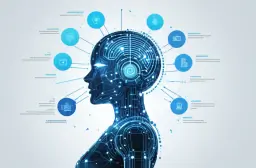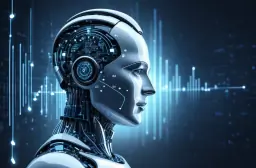AI in Education: Revolutionizing Learning & Teaching
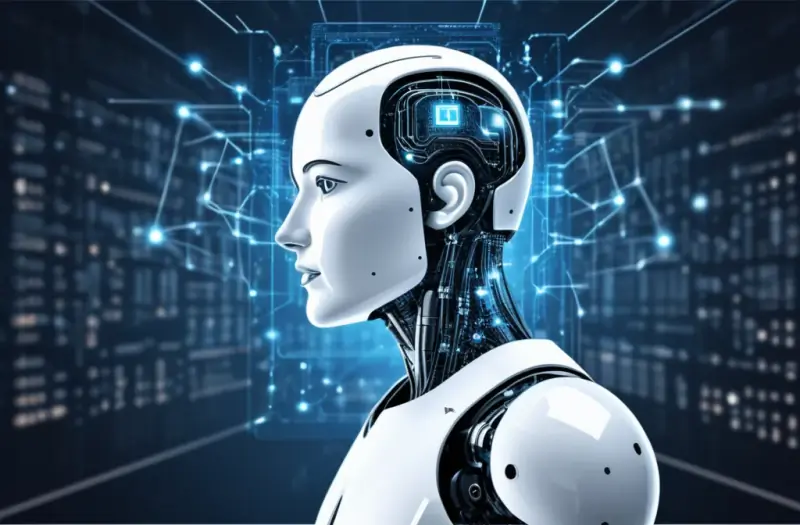
Table of Contents
In recent years, artificial intelligence (AI) has begun to reshape numerous sectors, and education is no exception. The integration of AI in education has the potential to transform both learning and teaching, offering innovative solutions that enhance the educational experience for students and educators alike. As we delve into the impact of AI in education, we’ll explore how this technology is revolutionizing traditional methods and paving the way for smarter, more personalized learning environments.
Introduction to AI in Education
Artificial intelligence in education refers to the use of advanced algorithms and machine learning to support and enhance the educational process. AI technology in education is not just a futuristic concept but a reality that is actively changing how students learn and teachers instruct. From intelligent tutoring systems to AI-enhanced teaching tools, the potential applications of AI in learning are vast and varied.
AI-driven education is designed to address several key challenges in traditional education systems, such as personalization of learning, scalability of resources, and administrative efficiency. By leveraging AI-enhanced teaching methods, educators can now tailor instruction to meet the unique needs of each student, making learning more effective and engaging.
Personalized Learning Experiences
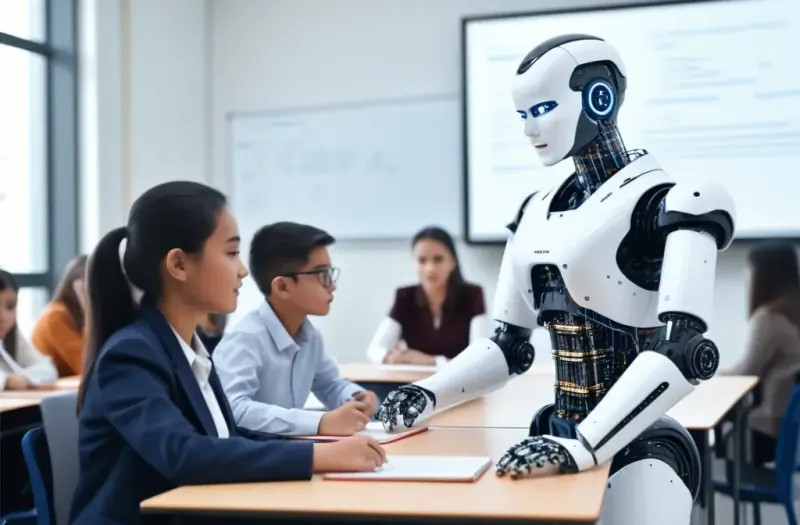
One of the most significant benefits of AI in learning is its ability to provide personalized learning experiences. Adaptive learning technologies powered by AI can analyze a student’s performance and learning style to deliver customized content and recommendations. This ensures that each student receives instruction that is tailored to their individual needs and pace.
Intelligent Tutoring Systems
Intelligent tutoring systems (ITS) are a prime example of how educational AI technology can be used to support personalized learning. These systems use machine learning algorithms to assess a student’s understanding and provide immediate feedback. Unlike traditional tutoring methods, ITS can offer 24/7 support and adapt to the student’s evolving needs, making them a valuable tool for enhancing AI-supported instruction.
AI-Based Learning Platforms
AI-based learning platforms offer a range of features designed to support personalized learning. These platforms can track student progress, identify areas where additional help is needed, and adjust the difficulty of content accordingly. By using AI educational tools, educators can provide a more individualized learning experience that caters to the unique strengths and weaknesses of each student.
Enhancing Teaching Efficiency
AI is not only transforming student learning but also enhancing teaching efficiency. AI-driven education tools can automate administrative tasks, such as grading and attendance tracking, allowing educators to focus more on teaching and less on paperwork. This increased efficiency can lead to a more productive and engaging classroom environment.
Automated Grading Systems
Automated grading systems use machine intelligence in education to evaluate student assignments and exams. These systems can quickly and accurately assess student work, providing instant feedback that helps students understand their mistakes and improve their performance. By reducing the time spent on grading, educators can allocate more time to personalized instruction and student interaction.
Smart Classroom Solutions
Smart classroom solutions incorporate AI to create more interactive and dynamic learning environments. Features such as smart whiteboards, AI-powered classroom management tools, and interactive learning apps enhance the educational experience by making lessons more engaging and accessible. These tools also provide valuable insights into student engagement and performance, helping educators make informed decisions about their teaching strategies.
The Role of Cognitive Computing in Education
Cognitive computing is a branch of AI that focuses on mimicking human thought processes to solve complex problems. In education, cognitive computing can be used to develop AI-supported instruction tools that understand and respond to students’ needs in a more nuanced way. By leveraging cognitive computing, educational tools can provide deeper insights into student learning patterns and offer more targeted support.
Adaptive Learning Technologies
Adaptive learning technologies use cognitive computing to create learning experiences that adjust in real-time based on student interactions. These systems can identify patterns in student behavior and performance, allowing them to tailor content and support to each student’s needs. This dynamic approach to learning helps ensure that students receive the right level of challenge and support, promoting more effective and efficient learning.
AI Applications in Classrooms
AI applications in classrooms can range from virtual teaching assistants to interactive learning modules. These applications use AI-enhanced teaching methods to support both students and teachers. For example, virtual teaching assistants can provide additional help to students outside of class, while interactive modules can make learning more engaging and interactive.
Benefits of AI in Education
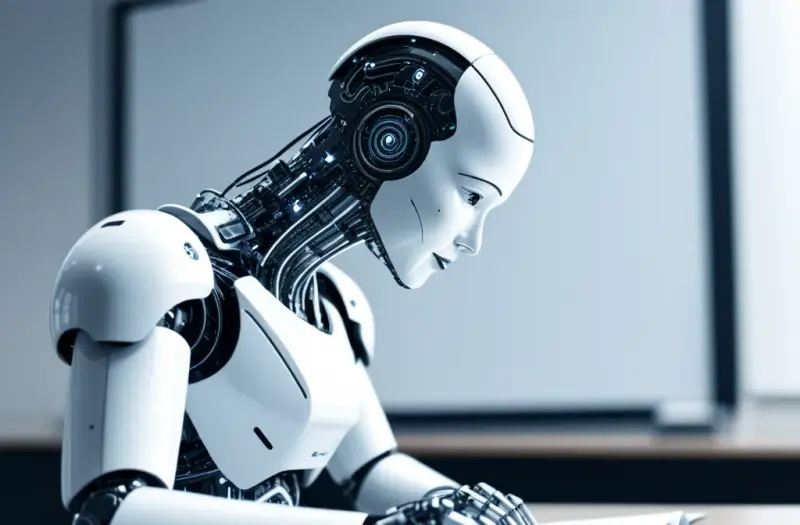
The integration of AI in education offers numerous benefits, including:
- Personalized Learning: Tailoring instruction to individual student needs.
- Increased Efficiency: Automating administrative tasks and streamlining classroom management.
- Enhanced Engagement: Using interactive tools and applications to make learning more engaging.
- Data-Driven Insights: Providing valuable insights into student performance and learning patterns.
Case Studies and Success Stories
Several educational institutions have successfully implemented AI educational tools and have seen significant improvements in student outcomes. For example, schools that have adopted AI-based learning platforms have reported higher levels of student engagement and improved academic performance. These success stories demonstrate the potential of AI to transform education and provide valuable insights into best practices for implementing AI in learning environments.
Challenges and Considerations
While the potential benefits of AI in education are substantial, there are also challenges to consider. Issues such as data privacy, algorithmic bias, and the need for adequate training for educators must be addressed to ensure the successful integration of AI in education.
Data Privacy Concerns
As with any technology that involves personal data, data privacy is a major concern when implementing AI in education. It is crucial to ensure that student data is protected and used responsibly. Educational institutions must adhere to privacy regulations and implement robust security measures to safeguard sensitive information.
Addressing Algorithmic Bias
Algorithmic bias can occur when AI systems make decisions based on biased data. In education, this can lead to unfair or discriminatory outcomes. It is important to use diverse and representative data when training AI systems and to regularly monitor and evaluate the performance of these systems to address any potential biases.
FAQs
How is AI currently used in education?
AI is used in education for personalized learning, intelligent tutoring systems, automated grading, and smart classroom solutions. It helps tailor instruction to individual student needs and enhances teaching efficiency.
What are intelligent tutoring systems?
Intelligent tutoring systems are AI-powered tools that provide personalized instruction and feedback to students. They adapt to each student’s learning style and performance, offering support tailored to their needs.
What are the benefits of AI in learning?
AI in learning offers benefits such as personalized learning experiences, increased teaching efficiency, enhanced engagement, and data-driven insights into student performance.
Are there any challenges associated with AI in education?
Challenges include data privacy concerns, algorithmic bias, and the need for adequate training for educators. Addressing these challenges is crucial for the successful integration of AI in education.
How can AI enhance teaching efficiency?
AI enhances teaching efficiency by automating administrative tasks like grading and attendance tracking, allowing educators to focus more on instruction and student interaction.
Conclusion
The impact of AI in education is profound and far-reaching. From personalized learning experiences to enhanced teaching efficiency, AI-driven education is transforming how we approach learning and instruction. As we continue to explore and implement these technologies, it is essential to address the associated challenges and ensure that AI is used ethically and effectively. The future of education is bright with AI, and by leveraging these advancements, we can create more dynamic, personalized, and effective learning environments.
Key Takeaways
- AI in education offers personalized learning experiences and enhances teaching efficiency.
- Intelligent tutoring systems and AI-based learning platforms are key applications of AI in learning.
- Cognitive computing and smart education solutions are shaping the future of education.
- Addressing challenges such as data privacy and algorithmic bias is crucial for successful AI integration.
Popular Tags
ADS SPACE HERE

